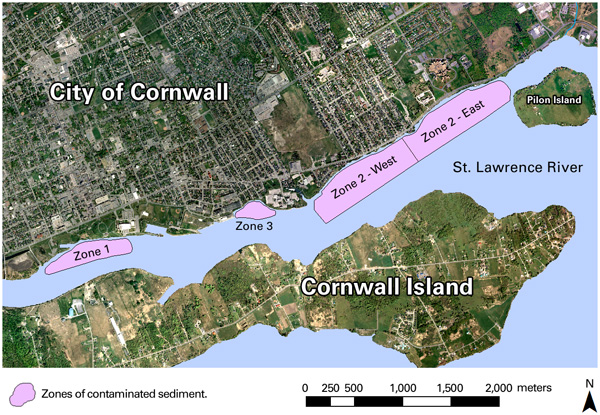Until a few decades ago, industrial waste and other pollutants discharged directly into the St. Lawrence River. These contaminants settled and built up in high concentrations in the sediment along the Cornwall waterfront. The chief contaminant in this sediment is mercury, a toxic substance that stays in the River environment for years. With the closure of several industries and stricter environmental regulations, cleaner sediment has begun to settle slowly over key areas of contamination, and a natural cap has been created. Cornwall Sediment Strategy administrative controls have been established to ensure mercury contaminated sediment deposits located in 3 zones along the Cornwall waterfront be left in place, undisturbed, to allow a natural recovery process to occur over time.

As they currently exist, historically contaminated sediments in these zones are stable and covered with a cleaner layer of sediment and therefore, do not pose a significant ecological risk.However, certain development activities requiring dredging, filling, covering, piling, or scouring have potential to disturb, expose or re-suspend these deeper more contaminated sediments. This is why a commitment to collaborate on safeguarding these sensitive zones along the Cornwall waterfront has been made.
Collaborating groups and agencies include:
- Environment Canada and Climate Change
- Fisheries, Oceans, and Canada
- Ontario Ministry of the Environment and Climate Change
- Ontario Ministry of Natural Resources
- Mohawk Council of Akwesasne
- City of Cornwall
- Raisin Region Conservation Authority
If you are planning a project within or adjacent to one of the contaminated sediment zones, please contact the RRCA so that we can coordinate the review of your proposal to ensure activities do not expose, disturb, or impede future remediation.

